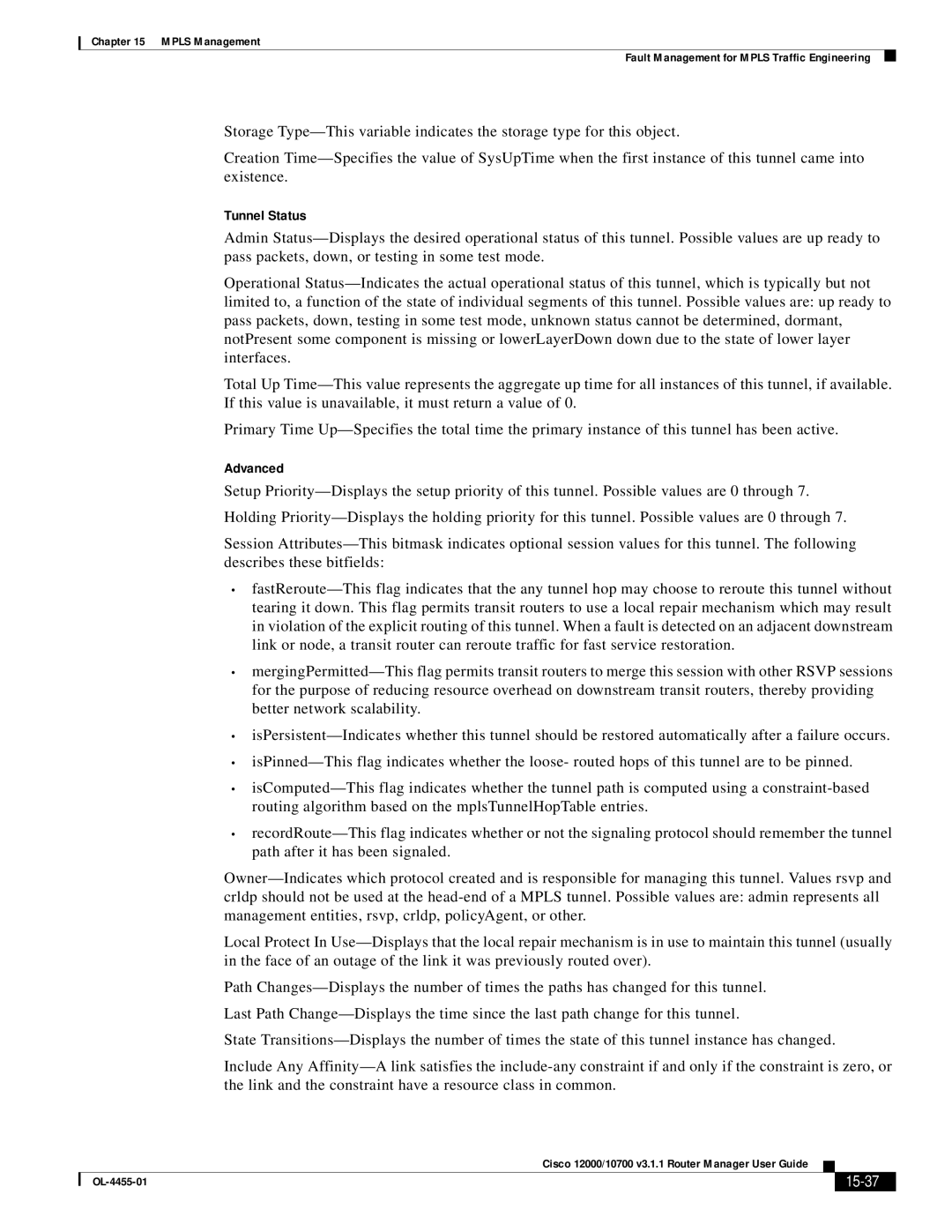Chapter 15 MPLS Management
Fault Management for MPLS Traffic Engineering
Storage
Creation
Tunnel Status
Admin
Operational
Total Up
Primary Time
Advanced
Setup
Holding
Session
•
•
•
•
•
•
Local Protect In
Path
Last Path
State
Include Any
|
| Cisco 12000/10700 v3.1.1 Router Manager User Guide |
|
| |
|
|
| |||
|
|
|
|
| |
|
|
|
| ||
